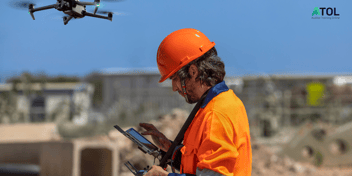
Discover the essential aspects of Clause 8.2 Emergency preparedness and response. We are here to guide you step by step, ensuring you meet the ISO standards.
This clause states that...
The organization shall establish, implement and maintain a process(es) needed to prepare for and respond to potential emergency situations, as identified in 6.1.2.1, including:
a) establishing a planned response to emergency situations, including the provision of first aid;
Let’s stop there for a bit and understand what is needed at this early stage. We need to understand what our potential emergency situations are and prepare for them so that we can respond adequately. We need to have a planned response to these emergency situations, that include providing first aid.
How do we know what the potential emergency situations are? Well, luckily, earlier on in clause 6.1 Actions to address risks and opportunities there are several opportunities for us to have already identified our potential emergency situations which include hazard ID and planning actions based on what has been identified.
We should already have an idea of what our potential emergency situations are and of course, part of our action to manage these is to establish planned responses. These planned responses can include these further points in ISO 45001:
b) providing training for the planned response;
c) periodically testing and exercising the planned response capability;
This means that once we have established our planned responses, we need to provide training for all of those potentially impacted and involved in an emergency response so everyone is familiar with the response process. And this also provides a great opportunity for feedback.
Then of course as part of this training, you will include testing and exercising of the response processes. You might choose to do a run-through of the response based on a scenario or you could do a desktop review. As part of the test if there is any equipment that is to be used during the response (such as an emergency eye wash or shower station) be sure to test that these are working as they should.
I used to audit a civil construction company. I audited them for about 9 years, and they had a great method of testing and exercising their emergency responses. They had a crash-test dummy called Sven. He was even dressed in the company high-vis uniform and Sven used to get into all sorts of trouble. He’d been involved in a trench collapse, and a plant rollover and even got himself caught in a lathe in the workshop.
The company used to conduct this test and exercise when I was there for the audit at times. All of the workers (employees, contractors, and visitors) were included in the test. The HR person was there taking notes on what was going well and what could be improved while the entire team worked together following the planned response. Sven was a real part of the business and provided great value and feedback for everyone.
Now that we’ve established these response processes and are providing training, testing, and exercise, this clause moves on to state…
d) evaluating performance and, as necessary, revising the planned response, including after testing and, in particular, after the occurrence of emergency situations;
This relates back to what I mentioned earlier talking about Sven. The HR person was always there evaluating the performance and receiving feedback from others so that any improvements to the planned response could be made. These updates are not only after a test but also in the instances where there has been an actual emergency that requires response.
Then this clause goes on to talk about communication requirements …
e) communicating and providing relevant information to all workers on their duties and responsibilities;
f) communicating relevant information to contractors, visitors, emergency response services, government authorities and, as appropriate, the local community;
g) taking into account the needs and capabilities of all relevant interested parties and ensuring their involvement, as appropriate, in the development of the planned response.
Absolutely! If there is a potential emergency situation that impacts workers whether they are employees or contractors, they need to be aware of what is expected if an emergency does arise. And it’s not just workers, it’s visitors and emergency response services as well. Any interested party that will be impacted needs to be included in developing the response, training, and testing.
Then finally how will you provide evidence that all of this has been conducted?
The final statement of this clause is:
The organization shall maintain and retain documented information on the process(es) and on the plans for responding to potential emergency situations.
Well, there is the evidence! We need to maintain documented information so this means that our planned responses should be documented. What we have to do should be written down somewhere so we can access it and follow it when we need to.
Then on top of this, we also need to retain documented information, so this is evidence of what has been done. We would expect to see a record of the tests and exercises conducted and the results of these. We would also expect to see records of responses to any actual emergency situations that have occurred the results of following the response and any improvements and changes as a result of this.
It’s pretty simple once you break it down like that.
Now that you have a better understanding of these requirements, it's time to take action and implement them in your own organization and ISO 45001 OH&S management systems.
If you'd like to learn more about ISO 45001, why not take a look at our other articles on the topic, starting with What is ISO 45001 and OHS Management Systems?
If you prefer watching over reading, head to our ATOLTV ISO 45001 playlist on YouTube, either way, be sure to check out our range of ISO 45001 OH&S management systems courses and qualifications today.





